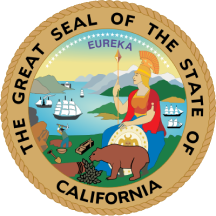Colleges across the United States will now be mandated to provide data demonstrating that they do not consider race in their admissions processes. This directive was issued by President Donald Trump on Thursday, following a Supreme Court ruling in 2023 that prohibited the use of affirmative action in college admissions. However, the ruling did allow institutions to consider how race has influenced a student's life if that information is included in their application essays.
Trump has raised concerns that colleges are still using personal statements and other indirect methods to factor race into admissions decisions, which he and other conservatives view as a form of illegal discrimination. The new policy aligns with ongoing scrutiny from the Trump administration towards elite colleges, which are often perceived as liberal institutions.
The executive order requires the Department of Education to establish reporting requirements for colleges to submit data to the National Center for Education Statistics. This data will include the race and sex of applicants, admitted students, and enrolled students. If colleges fail to provide accurate and timely data, Education Secretary Linda McMahon has the authority to take action under Title IV of the Higher Education Act of 1965, which governs federal financial aid for students.
Jon Fansmith, senior vice president of government relations at the American Council on Education, expressed skepticism about the order's practical implications. He noted that federal law currently prohibits colleges from collecting race information during the admissions process. "Ultimately, will it mean anything? Probably not," Fansmith said. He added that the rhetoric from the administration suggests that some students are being favored in admissions at the expense of others.
The first year of admissions data following the Supreme Court ruling showed mixed results regarding diversity across various colleges. Some institutions, like the Massachusetts Institute of Technology and Amherst College, reported significant declines in the percentage of Black students in their incoming classes. In contrast, other prestigious schools, including Yale and Princeton, experienced minimal changes.
In response to the Supreme Court's decision, many colleges have adjusted their admissions processes by incorporating more essays or personal statements to better understand applicants' backgrounds. Chief Justice John Roberts noted in the ruling that universities can consider how race has affected an applicant's life, provided it is linked to the applicant's character or unique abilities.
Historically, colleges have employed various strategies to enhance diversity, such as prioritizing low-income students and admitting top performers from every community in their states. California's Proposition 209, passed in 1996, banned the consideration of race in public education admissions, leading to a significant drop in Black and Hispanic enrollments at the University of California's most selective campuses.
Despite efforts to increase diversity, the University of California system has faced challenges. For instance, while Hispanic student enrollment has improved, Black student representation has decreased since the ban. Similar trends have been observed at the University of Michigan, which has also shifted its focus to low-income students following the rejection of affirmative action in 2006.
As the Trump administration continues to investigate allegations of illegal discrimination in admissions practices at several universities, including UCLA and UC Berkeley, the implications of this new policy remain to be seen.

 Local News in California
Local News in California

 New York Post
New York Post Los Angeles Times
Los Angeles Times Syrancuse.com
Syrancuse.com Raw Story
Raw Story AlterNet
AlterNet ABC30 Fresno World
ABC30 Fresno World